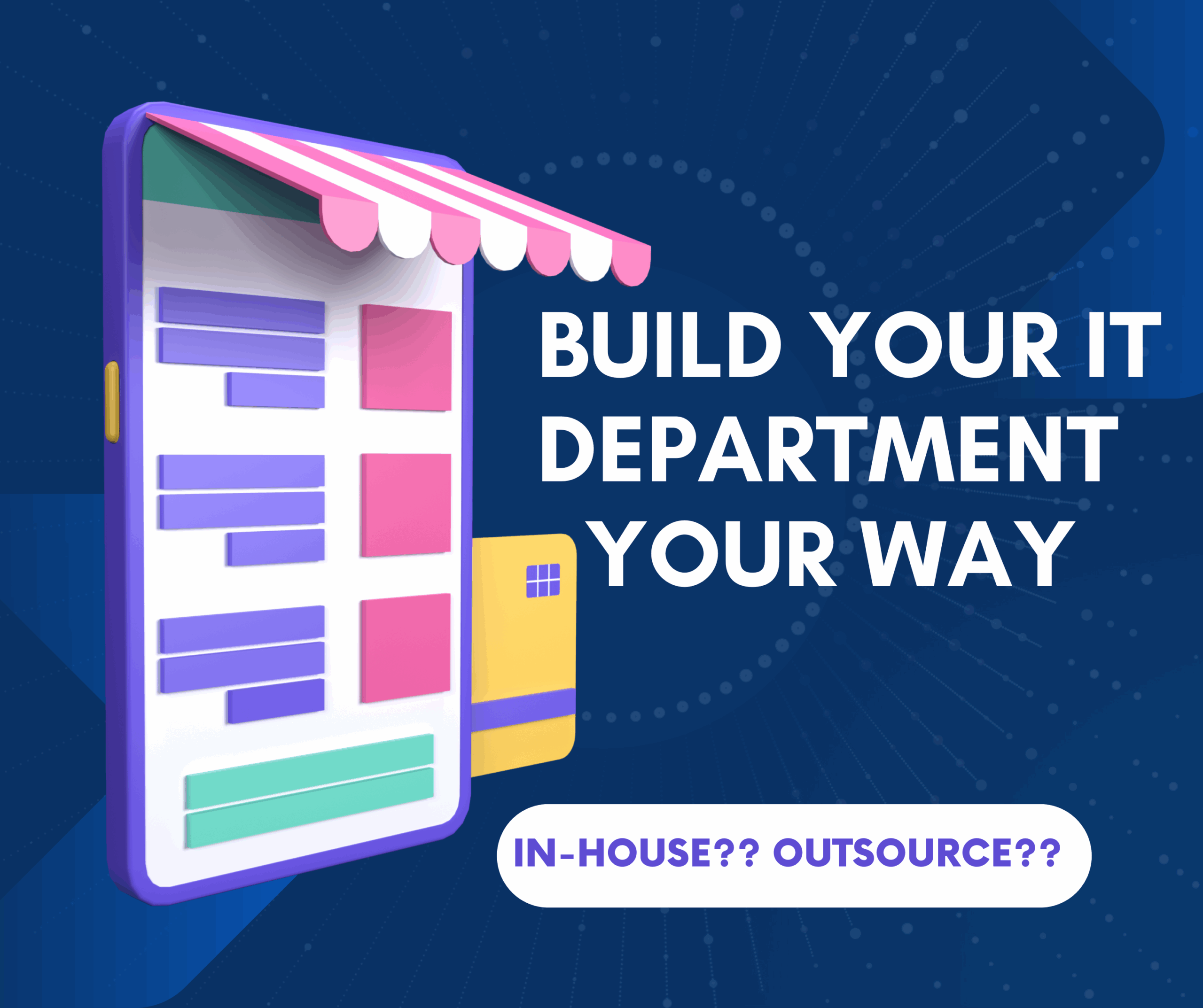Starting Your IT Department: In-House with Support or Fully Outsourced?
Setting up your IT department is a big step for any growing business. You typically have two options: build your team with internal staff and a consultant, or work solely with an external IT consultant. Each model can work well, depending on your goals, budget, and how much control you want.
Let’s explore what each setup involves, what to look for, and how to decide which one is best for your business.
Option 1: Build Your Team with Internal Staff and a Consultant
This approach combines your own hires with the help of an experienced IT consultant. It’s a great fit if you want to keep daily IT operations in-house but still want expert advice on systems, strategy, and risk.
Benefits:
-
Direct control over day-to-day IT needs
-
Ongoing advice from someone with broader experience
-
Knowledge stays inside your business
The consultant’s role is to guide your team, keep everything running smoothly, and support your long-term IT planning. They can also help with choosing the right tools, setting up secure systems, and training your staff.
What to Look For:
Choose a consultant who:
-
Has experience working alongside small IT teams
-
Communicates clearly and avoids jargon
-
Offers flexible support and training options
This setup helps your team grow while reducing the chance of costly mistakes.
Option 2: Fully Outsourced IT Consultant
If hiring staff isn’t right for you just yet, you can work solely with an external IT consultant. They act as your IT department, handling everything from setup to support.
This is ideal for small businesses, startups, or those who need reliable IT without the overhead of full-time hires.
Benefits:
-
Lower upfront cost compared to hiring staff
-
Access to broader knowledge and tools
-
Scalable services as your business grows
What to Look For:
A good external consultant should:
-
Provide clear service-level agreements (SLAs)
-
Offer fast, reliable support when things go wrong
-
Understand the tech challenges of your industry
You should also ask for regular check-ins or reports. These help you stay in control even if the work is being done off-site.
Making the Right Choice for Your Business
Whether you decide to build your team with internal staff and a consultant or work solely with an external IT consultant, your goal is the same — to keep your technology secure, efficient, and ready to grow with your business.
Start by identifying what support you need now and in the near future. Think about:
-
Your team’s tech skills
-
Your budget
-
The pace of your business growth
Whichever path you take, the right consultant will work as a partner, not just a technician. They’ll help you make smart decisions, protect your systems, and avoid common pitfalls. A recent move by Schroders to outsource much of its IT operations highlights the real-world benefits of external IT consultants — delivering cost savings, agility, and specialist expertise.
Don’t wait until something breaks to think about IT. Whether you want to build from the inside or outsource fully, planning early makes a big difference. Choose the model that matches your business goals, and make sure your consultant speaks your language — not just tech talk.
Need help figuring out the best fit? We can guide you through the process.

